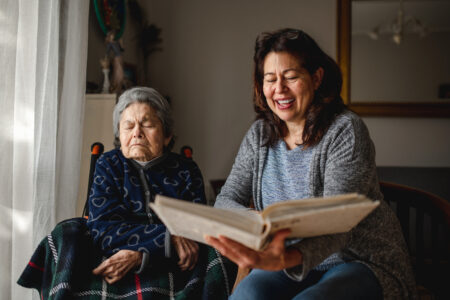
Share On Social!
Only 5% percent of Latinos participate in federal clinical trials, giving researchers fewer chances to find new cancer treatments for this population.
What can a health agency do to get more Latinos into clinical trials?
A new guide, Clinical Trials Outreach for Latinos: Program Replication Manual, developed by researchers at the Institute for Health Promotion Research (IHPR) at UT Health San Antonio, was created to help health agencies reach into Latino communities and increase their participation in cancer clinical trials.
With the guide, a health agency can:
- Learn about cancer clinical trials;
- Learn about donation of biospecimens (human materials such as skin, hair, and bodily fluids);
- Learn the need for Latino-focused outreach to increase trial accrual and biospecimen donation;
- Start outreach activities to increase accrual and donations;
- Adapt educational slides, materials and evaluations to local needs; and
- Increase the number of Latinos who participate in local trials and donate biospecimens.
 “Most of today’s best cancer treatments are based on what we learned from past clinical trials,” said Dr. Amelie G. Ramirez, director of the IHPR and the new manual. “The more Latinos join clinical trials, the faster we can find better cancer treatments and prevention options and increase survival rates.”
“Most of today’s best cancer treatments are based on what we learned from past clinical trials,” said Dr. Amelie G. Ramirez, director of the IHPR and the new manual. “The more Latinos join clinical trials, the faster we can find better cancer treatments and prevention options and increase survival rates.”
Latinos typically suffer higher incidence rates of liver, cervical, stomach, and gallbladder cancers than the general population, and have worse outcomes for many cancers.
In response, the IHPR developed an educational outreach program to increase Latino participation in clinical trials.
The program: developed an English-and-Spanish-language educational module to teach the community about clinical trials, their purpose, and benefits; trained community health educators to deliver the module; built a community resource directory; and recruited organizations for support.
The new manual makes it possible for other health agencies to adapt the program and its module and other resources to fit any community of Latinos.
“We hope other organizations can make additional progress in helping more Latinos join potentially life-saving cancer clinical trials,” Ramirez said.
The IHPR developed the manual through two of its projects funded by the National Cancer Institute (NCI). Those projects are Redes En Acción: The National Latino Cancer Research Network (Grant No. 3 U54 CA153511-02S1) and the Region 4 Transdisciplinary Geographic Management Program (GMaP) program, which is building a synergistic network of investigators in basic, clinical, population- and community-based research to eliminate cancer health disparities. The Region 4 GMaP project has a sister project, Minority Biospecimen/Biobanking Geographic Management Program (BMaP), based at New Mexico State University.
By The Numbers
10
Percent
of clinical trial participants are Latinos



